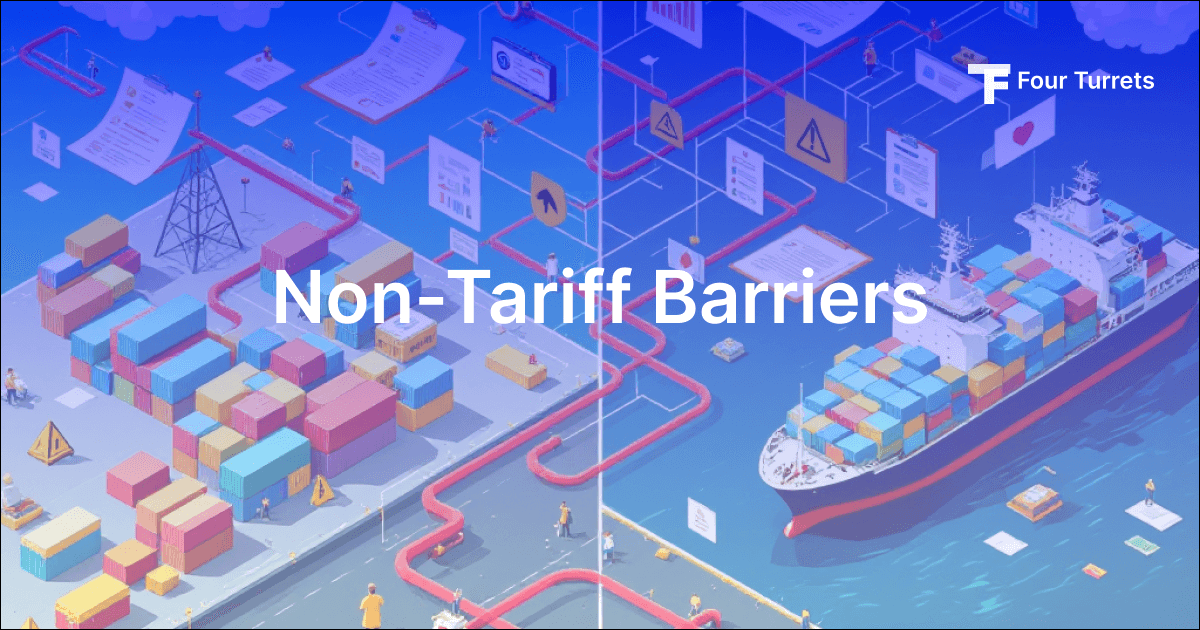Understanding Non-Tariff Barriers: A Key Challenge in International Trade
Businesses across the world faces various types of setbacks and issues while running their operations. One such critical challenge is non-tariff barriers (NTBs). As an entrepreneur involved in global import-export and digital marketing, understanding NTBs is essential to navigate trade regulations effectively and help your clients or business thrive in global markets.
What Are Non-Tariff Barriers? NBTs
Non-tariff barriers are trade restrictions that countries impose to control the amount of goods and services crossing their borders without using traditional tariffs (taxes on imports or exports). Unlike tariffs, NTBs restrict trade through other regulatory or procedural means, which can sometimes be less transparent but equally impactful.
Examples of NTBs include:
- Quotas: Limits on the quantity of a product that can be imported or exported during a specific period.
- Import Licensing: Requirements for obtaining permission before bringing certain goods into a country.
- Technical Barriers: Regulations and standards related to product safety, quality, or environmental protection.
- Rules of Origin: Criteria to determine the national source of a product, often used in free trade agreements to qualify for preferential treatment.
- Customs Delays and Administrative Procedures: Lengthy inspections or paperwork that slow down trade.
These measures can protect domestic industries but may also lead to trade disputes or be used as tools in trade wars.
Role of the World Trade Organization (WTO)
The World Trade Organization (WTO) plays a pivotal role in regulating and reducing non-tariff barriers to promote smoother international trade. The WTO agreements set the legal framework and rules that member countries must follow to ensure trade flows as freely and predictably as possible.
The WTO addresses NTBs by:
- Monitoring and reviewing trade policies of member countries.
- Providing a platform for negotiating the reduction of NTBs.
- Settling disputes arising from alleged unfair trade practices involving NTBs.
For example, the WTO’s Technical Barriers to Trade (TBT) Agreement aims to ensure that regulations, standards, and testing procedures do not create unnecessary obstacles to trade while allowing countries to protect health, safety, and the environment.
Why Non-Tariff Barriers Matter for Businesses
For businesses engaged in international trade, NTBs can significantly affect costs, delivery times, and market access. For instance:
- A quota can limit the volume of goods you can export, affecting supply chain planning.
- Complex license systems may delay shipments and increase administrative costs.
- Strict technical standards might require product modifications or certifications, impacting product development and marketing strategies.
Understanding these barriers helps businesses anticipate challenges, comply with regulations, and leverage free trade agreements that often include provisions to reduce NTBs through clear rules of origin and harmonized standards.
Navigating Non-Tariff Barriers: Tips for Entrepreneurs
- Stay Informed: Regularly monitor WTO updates and trade agreements relevant to your markets.
- Leverage Expertise: Work with customs brokers and trade consultants to navigate licensing and compliance.
- Optimize Supply Chains: Plan for potential delays caused by customs inspections or technical barriers.
- Use Digital Marketing: Educate your clients or audience about NTBs and how your services help overcome these challenges.
Tariff barriers can help a nation construct or destruct its economy by controlling how the importer or exporter will trade freely. Various agreement on tariffs and trade can help companies grow their global trade value.



